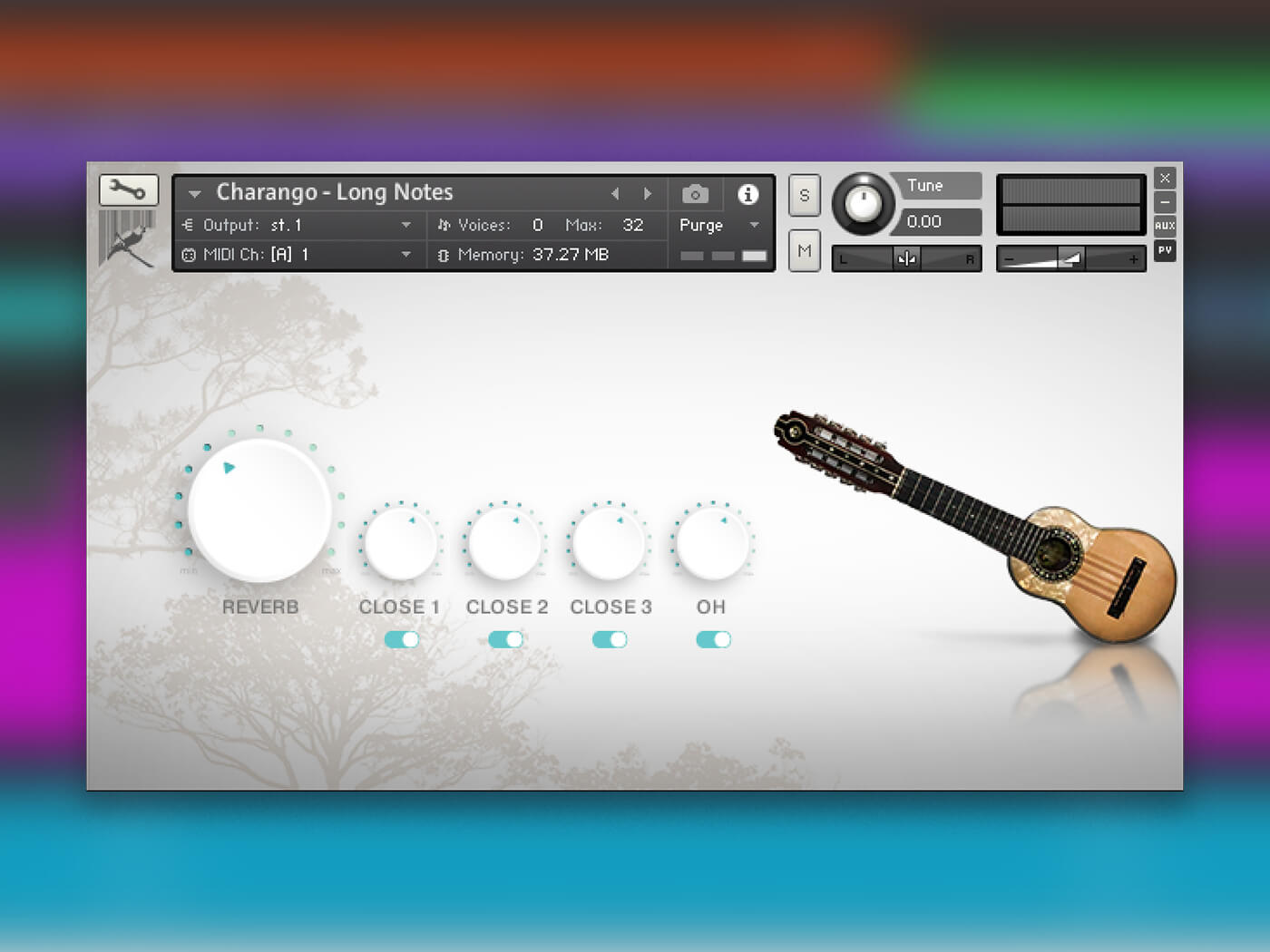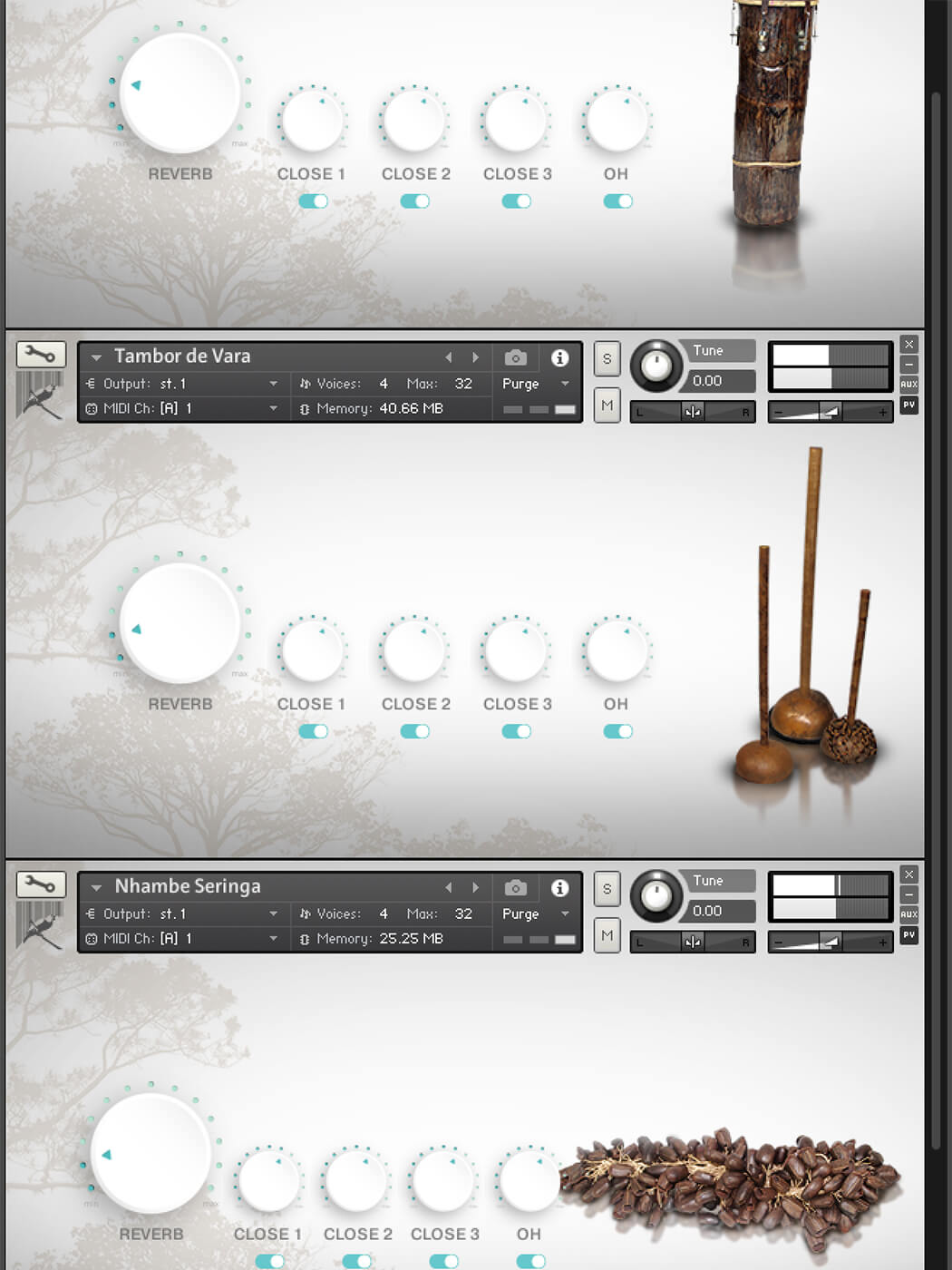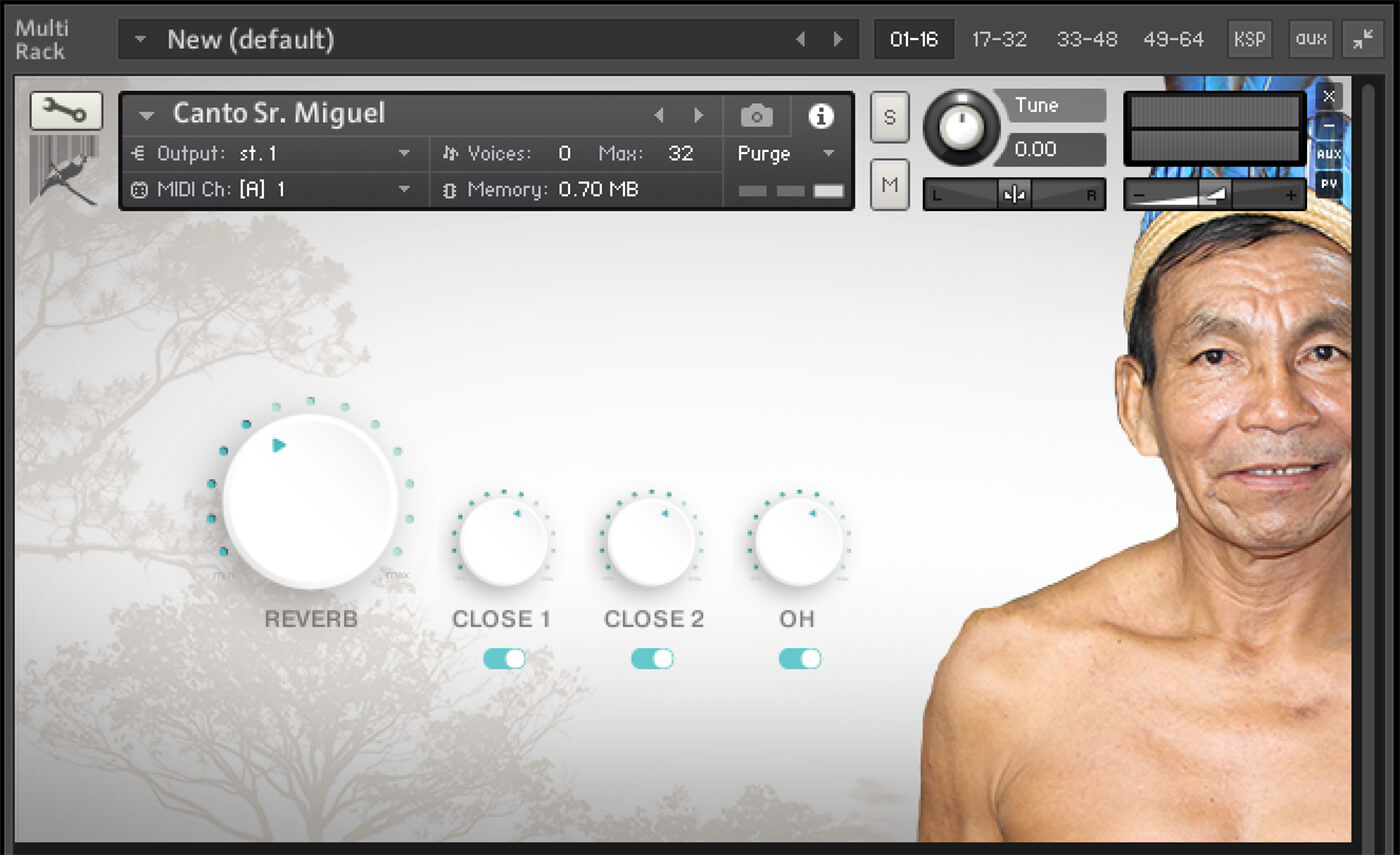Review: The Amazonic AMA Complete Edition
The Amazonic is more than just a sample library company collating hits and performances from the indigenous musicians of Brazil; it’s also a social enterprise.

The Amazonic Hero image
Review Overview
Our rating
8
Our verdict
⊕ Round robins and velocity mapping aid precise, authentic percussion performances
⊕ Multiple microphone positions and reverb help you sculpt the right ambience
⊕ Huge musicality in the percussion grooves
⊖ Limited programming scope for pitched instruments; no Legato scripting or attack/release
⊖ Requires the full version of Kontakt
A fantastically detailed and appealing collection of instruments. If percussion programming is a central part of your workflow, the Amazonic samples provide a perfect partnership to more bombastic trailer-ready libraries.
Price $249
Contact The Amazonic
Brazil’s Amazon rainforest is, perhaps, Earth’s most fertile ground. Home to a staggering number of animal species, it is also the birthplace of nearly 400 separate tribes of people, many of whom have their own languages and traditions. The Amazon region is also under enormous threat, with giant swathes of rainforest being destroyed every single day. This doesn’t just threaten the lives of its indigenous people and animals but impacts all of us; such is the Amazon’s impact on our atmosphere that its destruction is changing the Earth’s environmental balance.
If that sounds like an unusual way to start a review of a sample library, let’s introduce The Amazonic. This organisation has been set up for two complementary purposes. Firstly, it offers a deeply sampled collection of rare Brazilian percussion performed by musicians from the Amazon basin. Secondly, a purchase of any of the Amazonic’s libraries guarantees a donation of 30% back to those most in need. These include displaced Amazonian tribes requiring food, shelter and medicine. You can read more about the causes being supported via The Amazonic’s website.
Percussive overview
The AMA Complete Edition, on review here, includes every instrument recorded to date. A range of other bundles and individual instruments can be purchased, too, at a variety of prices. Instruments are hosted within Kontakt (you’ll need the full version) and are organised into Low, Mid and High Percussion, Shakers, Textures, Low and High Woodwinds, Voice and Plucked Strings.
Broadly, every Kontakt patch follows a similar approach, with single percussion hits assigned to the lowest keys with flams, rolls, effects and a collection of full grooves available higher up the keyboard. These patterns are wonderful; they’re musical, and they groove with unique, inherent swing. They’re instructive and educational, too; it’s interesting to trigger and learn a pattern before attempting to recreate it with the single hits at the bottom of the key range. This helps to personalise a groove or to reprogram it with the swing value your project demands.
Any sample library is only as good as the sum of its recordings, so it’s particularly pleasing that every instrument has been recorded with between three and five microphones, alongside a more ambient Overhead position. The manual offers no insight into which microphones have been chosen, which is a shame. However, the sound quality is sumptuous. While the Close 1 signal is likely to provide the core of your sound, the other microphones offer a breadth of colours to allow for personalisation.
While short on technical detail, as a resource for learning about Brazilian percussion, the manual is lovingly detailed. High-quality photographs of each instrument, a description of its cultural significance, pointers into how instruments are commonly paired or grouped and each performer’s name is included on each page.

Working with the library
If you’re drawn to this library, it’ll be for one of two reasons; either you’re looking to make ‘authentic’ Brazilian percussion tracks, or you’re keen to expand your existing musical palette with rare instrument choices. Either way, these samples will inspire you. Starting with the Low Percussion, the Amassador Macaco provides a powerful, tight sonic foundation for building other instruments around. It’s particularly pleasing that the pitch and tone potential of this drum is included, with a tighter, higher second hit available on C#0 to bring immediate musicality to the core hit on C0.
After auditioning a few instruments, a rapid workflow emerges. Play the looped grooves for inspiration and then program a core pattern using the main drum strikes at the bottom of the key range. Thereafter, you can return to each instrument’s ‘middle keys’ to bring enhanced authenticity, perhaps incorporating flams, rolls or hits with your main groove.
In the Low Percussion folder, in addition to instruments that you might know – Surdo, Cajon – there are some real unknowns (to me, at least). Highlights include the Gamba Grande – an aggressive sound, rich in overtones – and the conga-like Tumbadouras, whose resonance cuts through any mix.
In the Mid Percussion, the better-known Repique is appropriately biting and insistent. Meanwhile, the Tambor is represented in several iterations; the most fascinating of which is perhaps the water-filled Tambor d’Água. The collection of shakers is comprehensive, with 18 instrument variations. Beans, seeds, shells and other rattling elements are attached to (or hang from) wooden frames to create a tremendous variety of sonic textures.
The woodwinds continue the theme of subtle variations on some well known south American instruments, with pan-pipe-like qualities present in the Flauta and Mawaco instruments. These offer pitched key ranges but suffer slightly from a lack of performance parameters. I wouldn’t necessarily expect legato scripting, but as there are no attack and release dials, you’ll need to rely heavily on round robins and MIDI Expression to bring extra musicality to these instruments.

The same is true of the voice patches. There are two of these and, to be clear, they’re beautiful to listen to. One features phrases from the Dessana tribe, and the other offers solo performances from a singer named Miguel Lana, presenting some traditional tunes from his tribe. For composers, these are less immediately useful; it feels sacrosanct to suggest chopping them up for resampling purposes and yet, as full phrases, you’ll either have to be comfortable dropping a significant piece of musical tradition into your tracks, or you’ll have to choose to admire the beauty in these performances before moving on.
With this in mind, I’d certainly consider the percussive elements of this library as their main selling point. And what a collection it is, offering a toolkit of sonically rich and rare musical instruments, recorded with the full consent of local musicians. There’s nothing else like it on the market, which is reason enough to check it out. But as every purchase of this library also sends financial resources back to the people whose sound it showcases, there’s a second, excellent reason to consider the Amazonic libraries.
If percussion programming is a central part of your workflow, the Amazonic AMA percussion samples will appeal. Perhaps you’re looking for a curated set of sounds from this region, in which case the deep sampling via multiple microphone sources will inspire. Or maybe your existing percussion choices revolve around the ‘trailer ready’ hits of Heavyocity Damage 2, NI’s Action Strikes or Laboratory Audio’s Strikeforce libraries.
The good news is that the Amazonic samples provide a perfect partnership, with their deep percussion sounds adding a front-end layer of poise and power. The upper percussion samples can offer a close microphone ‘attack’ to pair with the widescreen flavour of more cinema-ready libraries. Of equal value is the groove and swing of the phrases recorded for each instrument, which blend seamlessly into existing productions and provide inspiration for your programmed patterns.
System Requirements
- Full retail version Kontakt 6 (or later) required
- OSX: 10.10 or later, Intel Core 2 Duo
- Windows: 7, 8 or 10. Intel Core 2 Duo or AMD Athlon 64
- 10GB hard drive space required
Key Features
- 30,000+ samples
- 100+ instruments
- 3 to 5 microphones
- Deeply sampled one-off and hand-made instruments from the Amazon
- Includes flams, rolls and effects to enhance core percussion hits.
- Free edition provides a useful try-before-you-buy flavour of the fuller library titles
- 30% of the purchase price goes back to the Amazon
- Educational discount available